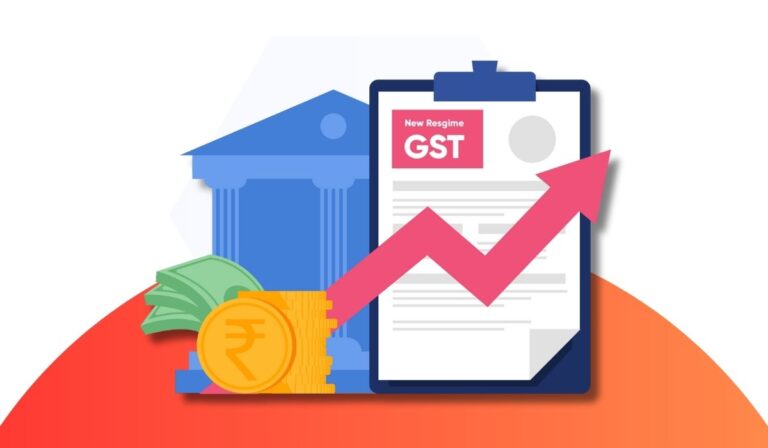In the financial world, the concept of leverage ratio plays a significant role, especially in assessing the financial health and stability of different companies. It is a type of financial measurement that looks at how much capital comes in the form of loans or debts and the company’s ability to meet its financial obligations. In this blog, we invite you to unravel the mysteries of the leverage ratio and discover its impact on different players in the financial realm.
What is a Leverage Ratio?
Many key metrics help in shaping the business landscape. Leverage Ratio is one such metric that is used to indicate a company’s financial health and risk tolerance. It’s like a magic trick that can unveil a company’s capital structure secrets. By dividing a company’s total debt by its equity capital, we unlock the hidden world of financial leverage. It’s like discovering the ratio that represents a company’s reliance on borrowed funds versus the capital invested by its shareholders. This powerful ratio holds the key to a company’s financial stability and its ability to withstand storms or soar to new heights.
Common leverage ratios include the debt-equity ratio, equity multiplier, degree of financial leverage, and consumer leverage ratio.
Why is it important?
The leverage ratio is a crucial tool for financial analysis as it provides insights into a company’s financial risk and stability. By examining this ratio, investors and creditors can assess a company’s ability to meet its financial obligations, withstand economic downturns, and generate returns for shareholders. Other reasons why the leverage ratio is important are:
- Evaluating stability and solvency: A healthy leverage ratio demonstrates the company has a balanced mix of debt and equity, indicating a stable financial position. On the other hand, a high leverage ratio could suggest a higher risk of default, impacting the company’s solvency and creditworthiness.
- Creditworthiness and Borrowing Costs: The leverage ratio plays a crucial role for companies when accessing credit from lenders. Lenders assess a company’s leverage ratio to evaluate its creditworthiness and determine the terms and conditions of lending. A higher leverage ratio may lead to increased borrowing costs, as it indicates a higher risk of default.
- Investment Decision-Making: A higher leverage ratio implies higher financial risk, as the company relies more heavily on debt financing. Investors consider leverage ratio alongside other financial metrics to make informed investment decisions. It helps them assess the company’s financial health, stability, and ability to generate returns.
Impact on Investors
Investors pay close attention to the leverage ratio when considering an investment in a company. This metric helps them weigh the potential risks and rewards associated with the investment. When a company has a higher leverage ratio, it means that a significant portion of its assets is funded through debt. This signals a higher level of financial risk.
While a higher leverage ratio can lead to greater returns when economic conditions are favorable, it also brings about increased vulnerability during economic downturns. Investors must thoroughly analyze the leverage ratio, taking into account other financial indicators, to make well-informed investment decisions and gain a comprehensive understanding of the company’s overall financial well-being. This ensures that they consider both the upside potential and the potential downsides, safeguarding their investments.
Impact on Financial Risks
The leverage ratio has a direct impact on a company’s financial risk profile. When a company has a higher leverage ratio, it means that it has taken on a substantial amount of debt relative to its equity capital. This heightened level of financial leverage exposes the company to greater risk.
Although debt financing can bring advantages like tax benefits and increased return on equity, it also comes with inherent risks. During economic downturns or unforeseen financial hurdles, a highly leveraged company may struggle to meet its debt obligations. This increases the likelihood of default, which can have severe consequences for the company’s financial stability.
Also, read: Quasi-Contract: What is it, and how is it useful?
Advantages of Leverage Ratio
- Better Return on Equity: By utilizing debt financing, a company can leverage its investments and generate higher returns. This allows shareholders to benefit from increased profitability and potentially higher dividends.
- Tax Benefits: By utilizing debt financing, a company can leverage its investments and generate higher returns. This allows shareholders to benefit from increased profitability and potentially higher dividends.
- Optimizing the Capital Structure: By helping companies to find the right balance between debt and equity financing, the Leverage ratio helps companies optimize their capital structure.
Disadvantages of Leverage Ratio
- Interest Expense and Cash Flow Burden: Taking on debt means incurring interest expenses, which can be a substantial financial burden for companies. High debt levels can lead to increased interest payments, reducing the company’s profitability and limiting its ability to reinvest or distribute profits to shareholders.
- Increased Financial Risk: Perhaps the most significant disadvantage of the leverage ratio is the heightened financial risk it exposes a company to. A higher leverage ratio implies a greater reliance on debt, which can make the company more vulnerable to economic downturns or unexpected challenges.
Conclusion
The leverage ratio is of paramount importance in financial analysis. It provides valuable insights into a company’s financial risk, stability, investment potential, and creditworthiness. Understanding and considering the leverage ratio empowers stakeholders to make informed decisions, manage financial risks effectively, and contribute to the long-term success of companies.
PayMe is an RBI-registered Indian lending Fintech company providing quick personal loans online to individuals and small businesses at low-interest rates. PayMe aims to bridge the gap between traditional lending institutions and borrowers who may need to meet their stringent requirements. With a user-friendly platform and fast loan approval process, PayMe is committed to providing its customers with financial freedom, Quick disbursal, and flexibility. In addition, the company aims to provide fast loan approval to empower individuals and businesses to achieve their goals by providing timely access to the necessary funds. PayMe’s customer-centric approach and innovative technology make it a leader in the Indian lending Fintech industry.
Read More: What are Jumbo loans?




